Tens of thousands of New Englanders went to religious revival camps in the summer to pray, preach and sing during the 19th and well into the 20th centuries.
The camp meetings inspired intense religious contemplation in the great outdoors for days at a time. People could attend the almost-continuous services that often lasted several days. Their fervent prayer was often accompanied by ecstatic motions, including falling, head jerking, dancing, laughing, singing and rolling in the mud.
Rev. Sarah Mount described what the campgrounds were like:
Imagine traveling to a lovely three-acre grove of trees, cleared of all underbrush, where tents for sleeping are standing in an oblong square, or a circle. Behind the tents are carriages, wagons and tethered horses. Cooking fires are placed just outside the tent flaps. In the center of the tents, there is a stage in front of a semicircle of benches, one section for the women and another for the men. At night this tent ground is illuminated by candles.
Some of camps are still around, true to their original purpose. Others are simply summer resorts.
Methodists, Presbyterians and Baptists, even a Quaker ran the religious revival camps. It was the Methodists, though, who brought the camp meeting east from the western frontier.
The Methodist movement steamrolled the established religious traditions of the country and caused a tremendous stir. Somewhat more progressive in their attitudes toward slavery and women in the church, the Methodists reached out to include the working poor in their churches. The church’s message was that salvation was there for the asking, no matter your background or sins.
The first Methodist revival camp meeting was held in New England in 1802 at Haddam, Conn.
One of the most sensational crimes of the 19th century was linked to a camp meeting in Thompson, Conn., where a Methodist preacher allegedly had sex with a mill girl and later murdered her. The religious revival camps were often located near water for ease of transportation access. Some have become seaside resorts, like Old Orchard Beach, in Maine. The most famous, Oak Bluffs on Martha’s Vineyard, attracts prominent African-Americans such as Spike Lee, Henry Louis Gates and Charlayne Hunter-Gault.
Here are six New England places where religious revival camp meetings were held, one in each state.
Plainville Camp Grounds
When the Civil War ended in 1865, the New Haven District of the Methodist Church founded a campground for revival meetings in Plainville, Conn. Methodists would pray and preach there for the next 92 summers.
Like many religious revival camps, Plainville’s layout was probably influenced by the Camp Meeting Manual. A central platform was built and meeting-goers put up a circle of tents around it.
Soon a train station was built, and farmers drove as many as 3,000 Methodists to camp meeting in wagons to the campground. Eventually a building was erected to store equipment, and a screened auditorium was built in the center in 1905. Today’s it’s an open-air pavilion.
Churches in the district began building two-story cottages in a circle around the center of the campground. From the 1880s to 1910, individual families built their own cottages on the narrow streets radiating from the circle. They began to spend time in their cottages even when a revival meeting wasn’t held.
The campground also hosted large gatherings for the American temperance movement, the Grand Army of the Republic, Seventh Day Adventists and chautauquas.
The revival movement faded and in 1957 the Methodists sold the campground to the Plainville Camp Grounds Association. In 1980 the campground was declared a National Historic Site.
Some of the cottages weren’t maintained and had to be torn down in the 1940s and 1950s, but others were improved, expanded and painted bright colors, giving them the nickname ‘painted ladies.’ Eighty-seven are privately owned on the Plainville Camp Grounds, and 19 of the original cottages survive on what is called the Circle.
Click here for multiple images of the Plainville Campground.
Empire Grove Campground
Empire Grove got started in 1793, when Methodist circuit rider Jesse Lee preached and served communion at the house of Nehemia Strout in East Poland, Maine.
Shortly after Maine separated from Massachusetts, Methodists began holding camp meetings at a New Gloucester farm, which they eventually outgrew. In 1857, the grandson of Nehemiah Strout offered them his pasture land for $37.50 a year for 99 years. Seven years short of the expiration date in 1950, the Empire Grove Campmeeting Association bought the land.
Campers in the early years stayed in tents, but eventually built cottages. Today there are 58 left. Originally they were built on a circle around the center, but many have been moved to more spacious lots. The association bought more land in 1980, bringing the total to 99 acres.
There was once a fence, which kept out horses on Sundays. Cottage owners bought season tickets for 25 cents.
Empire Grove is still holding camp meetings. “We are an Ecumenical Christian fellowship with ties to the United Methodist Church,” the Association says. “Some live here year round, others during the summer months, and a few who are here only for Campmeeting.”
Today Empire Grove features a preachers stand, chapel fellowship center, lodging, time keeper and museum. For an album of Empire Grove’s cottages, click here.
Asbury Grove Methodist Campground
When the Asbury Grove Methodist revival camp opened in Hamilton, Mass., in 1859, 12,000 people attended the first camp meeting. Until then, Methodists who lived in or near Boston had had to travel to Eastham on Cape Cod for camp meeting. Hamilton was only 30 miles north of Boston.
A pulpit was erected in a pine grove and wooden benches built around it. Platforms were constructed for tents that could shelter as many as 100 people at a time. The tents started to give way to wooden cottages, the first built in 1868. In the style of most Methodist revival camps, they were rough on the inside and decorated with ornate gingerbread outside.
Over the next three decades, an estimated 300 cottages were built. At its peak, 11 trains a day served the railroad depot, 200 kerosene lamps lit the streets. There was a chapel, library, dining hall, hotel, bakery, post office and small jail.
Asbury Grove was intended as a retreat from worldly cares, and campers came from all walks of life. One 19th century resident directory lists a shoe manufacturer, teamster, oil dealer, carpenter, and a tin ware dealer.
Fires and hurricanes diminished the camp over the years, but still standing are five dormitories, more than 100 historic cottages, pulpit, tabernacle, library, dining hall and bakery. For the 150th anniversary in 2009, the Asbury Grove Meeting Association renovated the historic buildings. Worship services and social gatherings marked the occasion.
Today, Asbury Grove is a hidden gem in one of Boston’s wealthiest suburbs.
Advent Christian Campground
The first call for a camp meeting in Alton Bay, N.H., went out on Aug. 4, 1863:
NEW HAMPSHIRE CAMPMEETING
Providence permitting, there will be a campmeeting at Alton Bay, N.H. to commence September 7, and hold over the following Sunday. Come ye servants of the living God to the New Hampshire campmeeting to feed the flock of Jesus Christ and save souls from the “second death.” Further particulars herewith.
For the brethren, J. G. Smith
The Advent Christian Campground in Alton Bay, N.H., started with a lease of four acres along Lake Winnipesaukee from the Boston and Maine Railroad.
A natural amphitheater was created by placing a circle of wooden benches in a grove of pine trees.
The campground expanded to 78 acres and included a large tabernacle, a kitchen, a bakery, store, book store, boarding house and an ice house. By 1900, 10,000 campers came each summer, staying in more than 250 tents. Small wooden cottages were eventually built on tent platforms standing cheek by jowl to each other.
By 1945, 400 cottages had been built. A fire swept through the campground that year, destroying many of the cottages, the tabernacle and book store. Another fire in 1967 destroyed the boarding house and store. Much of the campground was rebuilt after the fires.
Today, the Alton Bay Campmeeting Association is a year-round Christian conference center with a relaxed atmosphere ‘that provides opportunity for fellowship, reflection, prayer, rest, recreation, and participation in a wide variety of activities geared to spiritual life and growth.’
Portsmouth Camp Meeting
In 1890, a Quaker minister named Seth Cook Rees held the first Portsmouth Camp Meeting on July 25, 1890 on Aquidneck Island. Rees ran the Portsmouth Camp Meeting Association for 25 years. Campers stayed in tents during the first camp meeting, which lasted 10 days. A kitchen was added, then a retreat center, small one-room cottages, larger cottages, a dormitory, a dining room and a bookstore. Cottages have been handed down through generations of the same family.
Some of the cottages and buildings are in need of repair. To see a photo gallery of the buildings and grounds, click here.
Today, about 150 adults and children come to the Portsmouth camp to worship and pray around the first week in August. They are Methodists, Baptists, Roman Catholics, Nazarenes and non-denominational. Portsmouth Camp Meeting is listed in the Holiness Camp Directory.
East Barnard, Vt.
During the 19th century, Methodist circuit riders from all over attended an annual meeting in Barnard, Vt. Revival meetings were planned for them en route to the conference, and at the same time it was happening.
That may explain why East Barnard, a hill town village in Barnard, was a hotbed of Methodist fervor. Early in the 19th century, preacher Truman Allen wrote Methodism ‘spread like small pox before the vaccine.’ Many young men were converted in East Barnard, where camp meetings lasted as long as four days in August. White cotton tents stretched a quarter of a mile from East Barnard village. Today, the campground is dotted with fields and houses.
In 1834, the East Barnard Methodists and other denominations in South Royalton and North Pomfret got together to build a church. It was finished the next year.
Other Religious Revival Camps
A short list of some other New England campgrounds include:
- Camp Aldersgate in Scituate, R.I.
- Camp Bethel in Haddam, Conn.
- Craigville in Centerville, Mass.
- Hedding CMA in Epping, N.H.
- On-I-Set Wigwam Spiritualist Camp in Wareham, Mass.
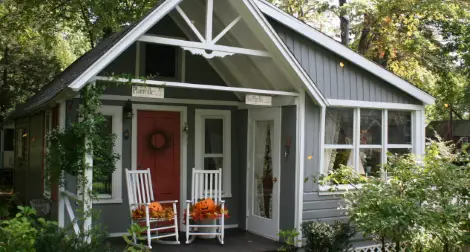
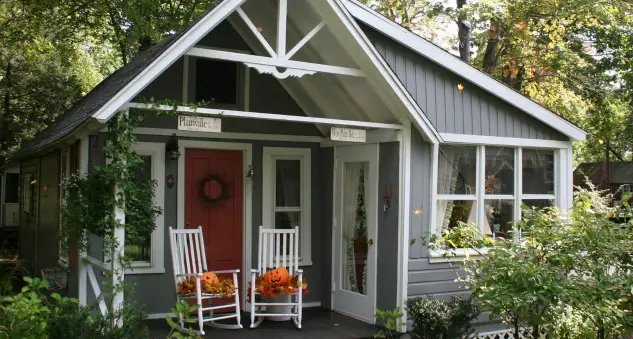

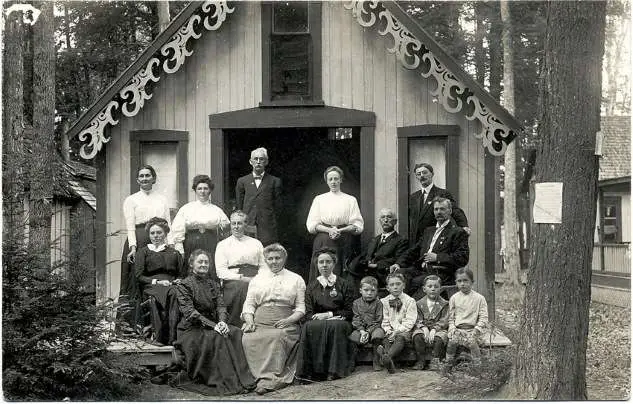

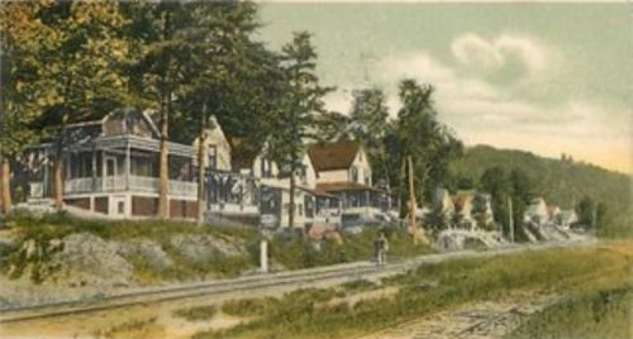
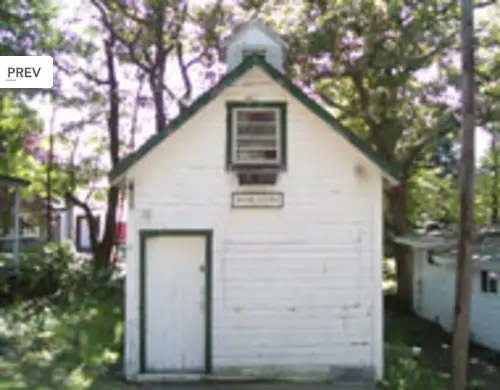
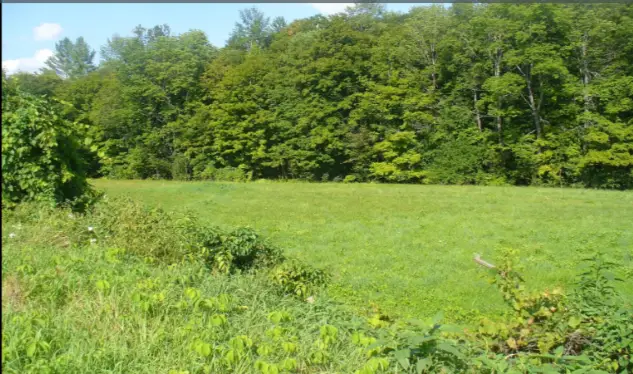

1 comment
[…] of Sarah Whitcher became part of Warren, N.H., lore for generations. Over time, it was imbued with religious overtones and made more miraculous in its depiction. The man from Plymouth had been following a vision, in […]
Comments are closed.